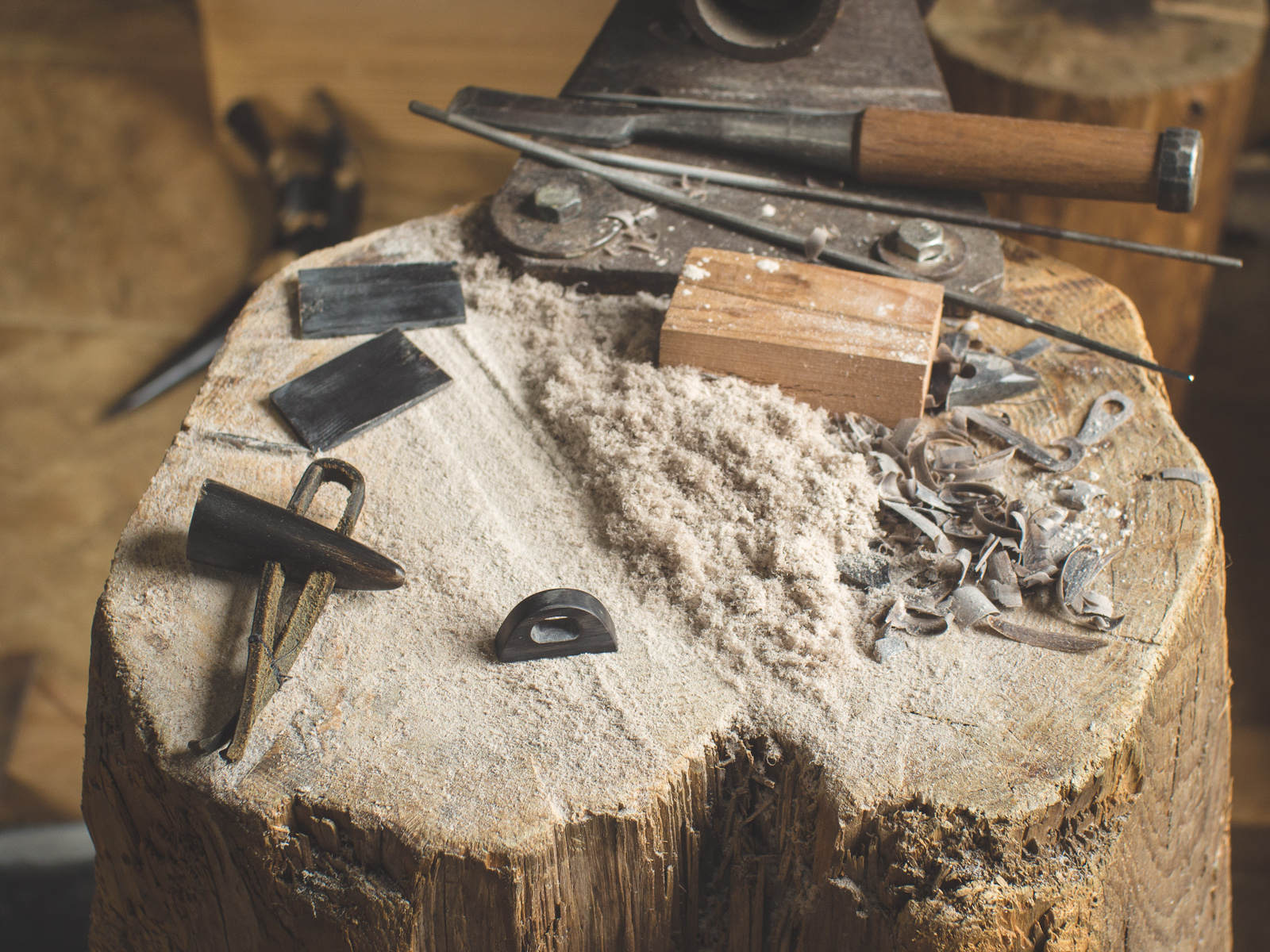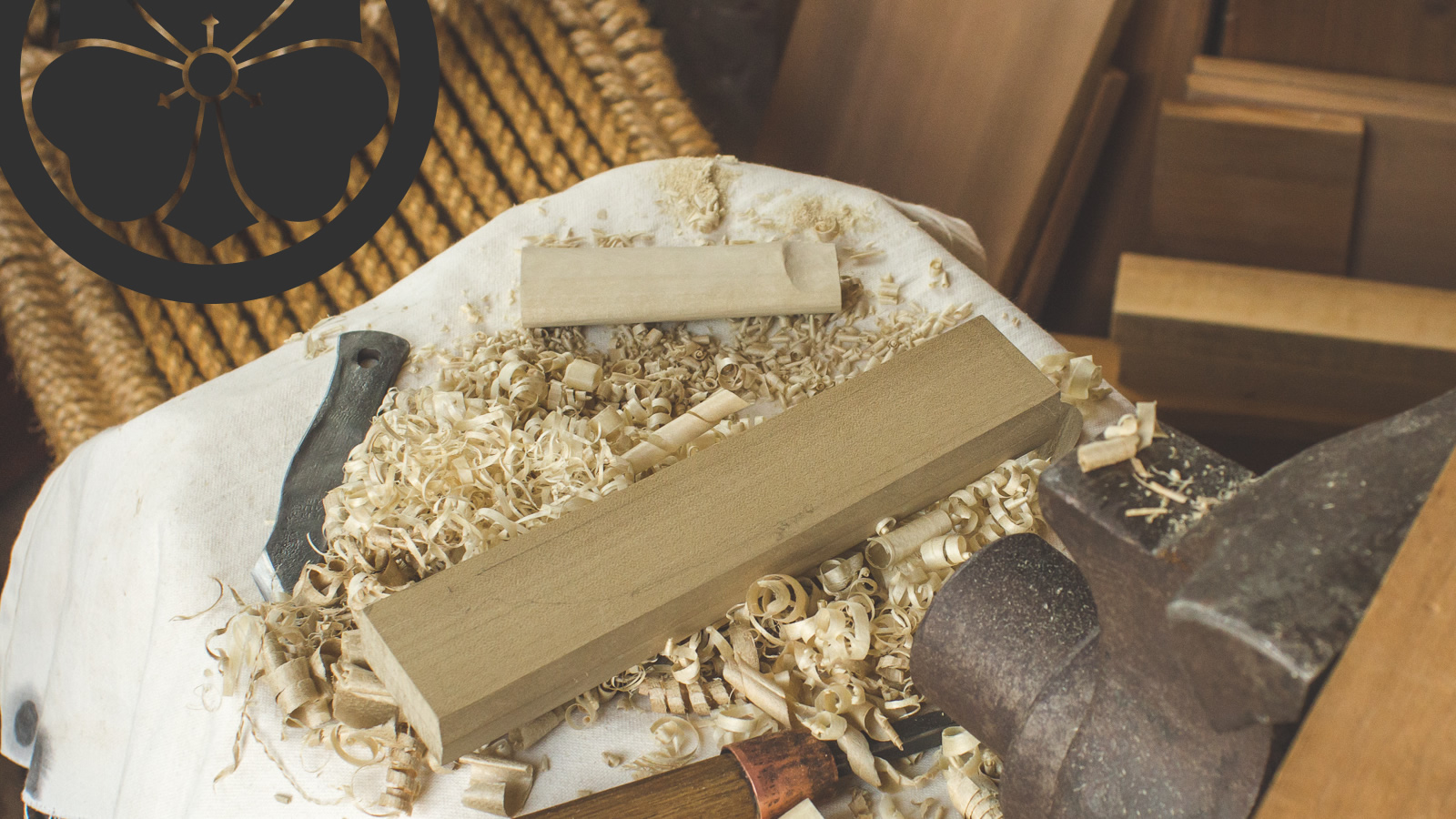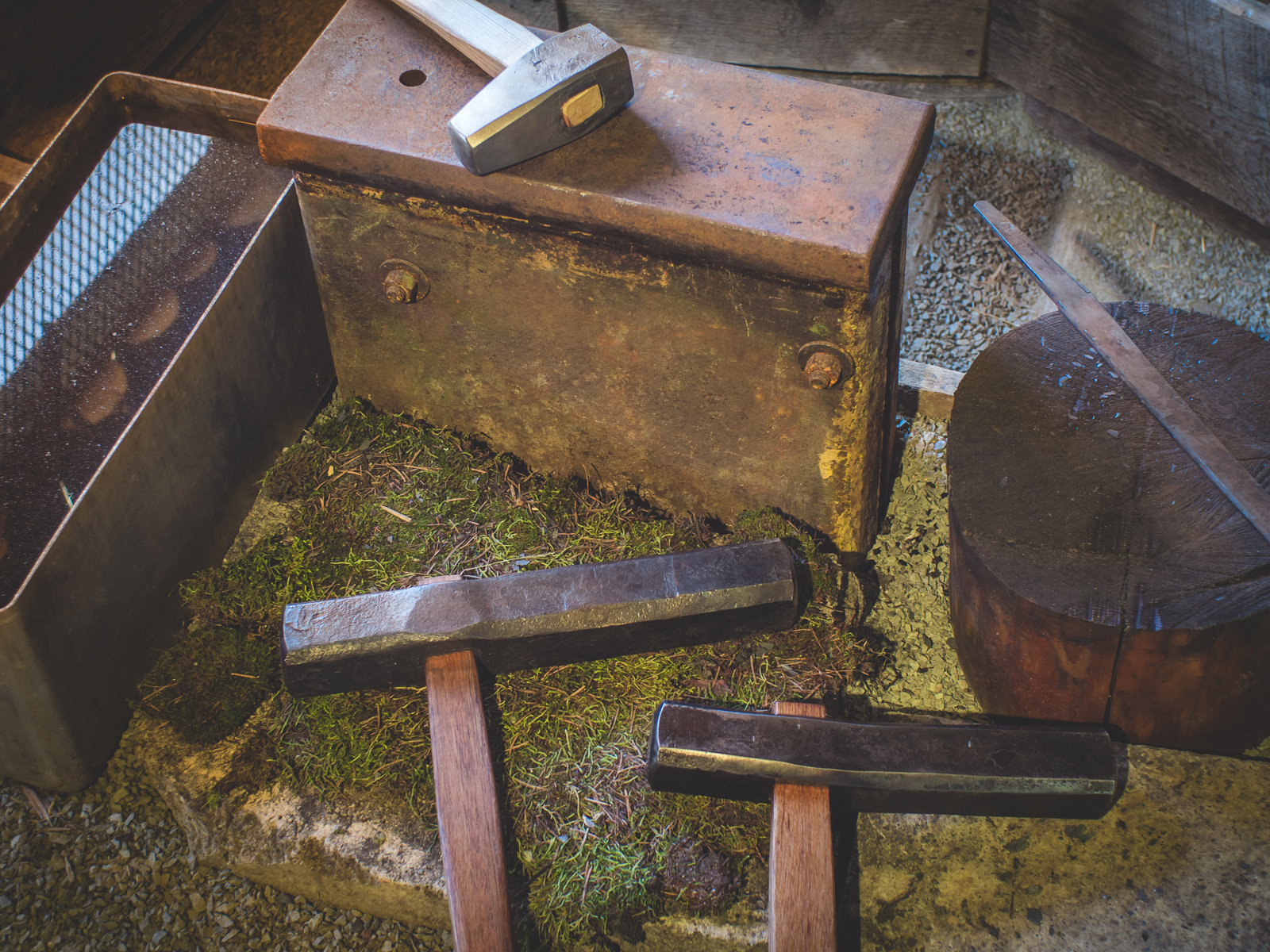-

Making a Kanna from a Reclaimed Chisel
A custom mameganna (small “bean” plane) such as might be used by furniture makers can be made fairly quickly from an old chisel. This type of kanna might be used for shaping saya or tsuka or for other small woodwork projects requiring a custom radius or access to tight spaces. Materials for the project are…
-

温故知新・On Ko Chi Shin
A true and accurate understanding of the past is an important step towards a good future. 温故知新 (on ko chi shin) is an expression that most directly translates to, “study the old to know the new”. This one-of-a-kind project represents the current progression of my work based on the study and practice of historical techniques,…
-

TimeWarp #10 – Forging Habaki for a Tanto
Making a habaki from reclaimed copper. Material is scrap copper from an electrical bus bar, forged and bent to shape, silver brazed with hard silver solder in the charcoal forge with fuigo, finish work done with files and rasps. Watch the full length process edit here.
-

Futokorogatana Kaiken Tanto
Futokorogatana (懐刀) is translated as “clothing fold sword” and describes a type of tanto mounting meant to be carried in the kimono sleeve or fold. Also known as kaiken, this humble style of hidden mounting is usually unadorned with a smooth profile and lacquer finish. More photos and information.
-

Process: Making a Futokorogatana
Futokorogatana (懐刀) is translated as “clothing fold sword” and describes a type of tanto mounting meant to be carried in the kimono sleeve or fold. Also known as kaiken, this humble style of hidden mounting is usually unadorned with a smooth profile and lacquer finish. This knife would historically be carried for last chance survival…
-

Bladesmithing at the Museum Forge
Forging a custom forest kotanto in the swordsmith forge. The starting material was a harrow tooth, the finished blade is hirazukuri, mitsu mune, 140mm / 5.5″ nagasa, with a sturdy 6.5mm motokasane. The finish will be tsuchime (hammer texture) so there was no filing or polishing before yaki-ire, which was done at my forge for…
-

Process: Making the Fittings – Aikuchi Tanto Koshirae
The fuchi and koiguchi are from a reclaimed buffalo horn souvenir, the kurikata is from a reclaimed horn button, the wrapping is rawhide samegawa, the mekugi is copper and silver. All of the parts are first shaped and fit, then the samegawa is wet formed to the handle contours, dried, and then attached with sokui…
-

Process: Carving the Tsuka & Saya – Aikuchi Tanto Koshirae
In this video the tsuka is carved first, starting with the fuchi end and then the kashira area, carving the profile outlines and then removing the material in between before carving the final shape and sculpting the details. The saya is next, first dimensioning the blank is to approximate size and then profiling the koiguchi…
-

Process: Carving the Inside – Aikuchi Tanto Koshirae
In this video the tsuka is carved first, starting with the omote side and then the ura, carving each half from the mune to the ha. The saya is next, starting with the omote and then the ura, each half beginning with the fitting of the blade (from the mune towards the ha) and then…
-

Making a Handle for a Japanese Swordsmithing Hammer
Traditional Japanese swordsmithing hammers have rectangular eyes with no taper. The handles are not wedged but are held in place by a compression fit involving careful shaping, hand forged wood (kigoroshi, 木殺し), and soaking in water. The wood is shaped a mm or two oversized, compressed by hammering, and then driven through the eye. When…
-

Testing Scrap Steel for Knife Making
Most of history was forged with steel that had no designated number or specified ingredient list. Historical smiths would interpret the quality and properties of steel based solely on careful observation and simple testing procedures. To this day, Japanese swordsmiths work exclusively with unnumbered steel made with charcoal and iron sand in traditional smelting furnaces.…
-

TimeWarp #9 – Making a Mountain Kotanto
Read about the process of making this knife, learn about the Tools for Satoyama project, or design your own knife.
-

An Inside Look at Kobuse Construction
Though the majority of tanto are muku (one-piece construction), after the beginning of the edo period larger swords (katana, wakizashi) are often intentionally constructed of multiple steel components containing differing carbon content. The reason partly stems from the increase in brittleness of steel made from mass-produced tamahagane which began around that time and also from…
-

Process: Making the Mountain Kotanto
The wider profile of the mountain style kotanto is inspired by a kamakura sword and has a more deeply curved tip (fukura-tsuku) and shorter drop point. The simple and humble mounting style is inspired by the age-old style of farming and foresting tools traditionally used in managing satoyama lands. Satoyama are the managed forest areas…
-

Silver Soldering Habaki with a Charcoal Forge & Fuigo
A clip from yesterday’s work: silver soldering a habaki with the charcoal forge & fuigo box bellows. Watch the machigane area and you can see the solder begin to melt and flow around 0:40 until it is pulled out to stop the heating. The fuigo allows very precise air mix and heat control. When soldering…
